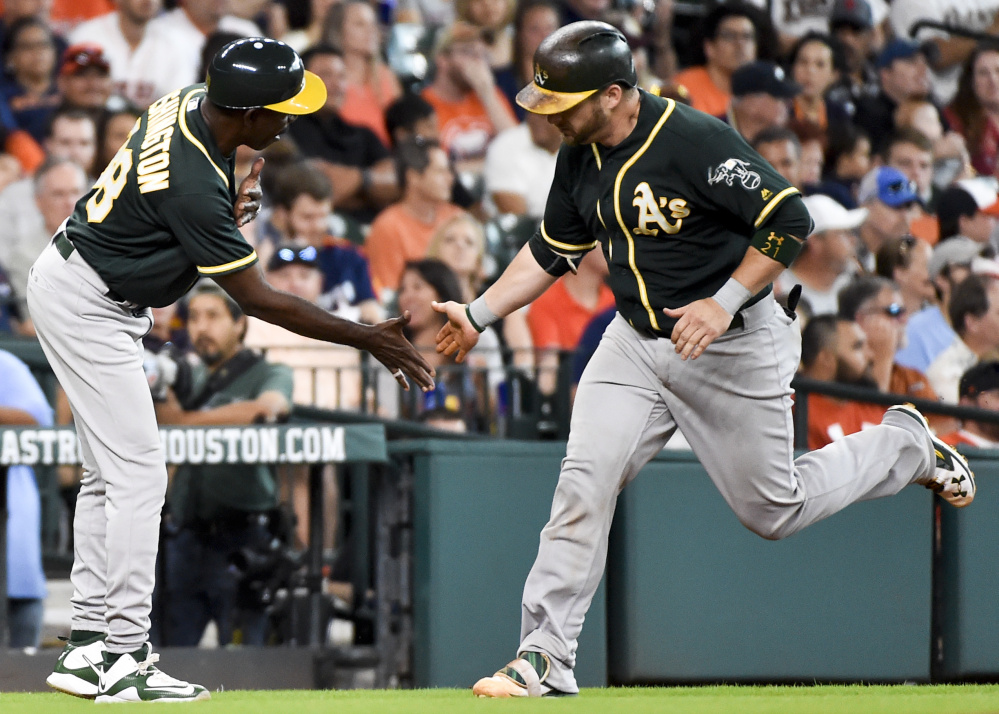Baseball likes to think of itself as egalitarian, and nowhere is that more evident than the All-Star Game.
When the American and National League teams meet Tuesday night in San Diego, all 30 major league teams will have at least one representative.
That level of inclusion doesn’t happen in the National Basketball Association or National Football League. Baseball has had such inclusion in the fine print for eight decades. Have a franchise, have a piece of the All-Star action.
And it’s not a small club. When this year’s rosters came out following months of fan and player voting, six AL teams and seven NL teams had exactly one player.
All things All-Star are subject to change, of course, and injuries and the final player voted in in each league by the fans led to 10 additions, reducing the number of teams getting one and only one player this year down to 10.
In 1933, for the first All-Star Game in Chicago’s Comiskey Park, there were eight teams per league and 18 players on the All-Star team. In 2016, there are 15 teams per league and 34 players on the All-Star team.
That first All-Star Game was supposed to be one and done. But the spectacle was such a hit that baseball hasn’t ever let it go.
Ever since the one-team, one-player minimum rule was locked in place, roster sizes have increased, sometimes because of franchise expansion and sometimes because it just seemed right to have more All-Stars on display.
In the early days, when radio was just beginning and television was a couple of decades off, that kind of representation made sense. The game was fun. It was an exhibition.
Sure, maybe a few of the AL and NL executives took the game seriously, but it was the game itself that was important, not the result.
For better or worse, it morphed into a marketing tool. It didn’t count in the standings, sure, but it provided the sport with a major baseball-specific focus.
It worked then and it works now. Routine midseason games generally average about a 0.7 viewership rating while the All-Star Game in recent seasons has averaged between 6.6 and 7.5, so Tuesday night will do about 10 times a normal night’s business for MLB.
That makes inclusion important. Having a player from each team puts the All in All-Star.
Still, eight decades after the game came out of Chicago, it’s not clear that the one-team, one-player minimum rule is still relevant. The Braves or the Twins are this year’s most downtrodden teams, but if they were to be passed over for an All-Star berth, Atlanta or Minnesota fans wouldn’t lose touch with the players; they’d be able to see them again on TV this weekend.
For this story, baseball executives, managers, players and scouts were canvassed for opinions about whether this rule still makes sense. A sizeable minority said the rule was outdated.
But no one, not even those who said they believe the rule was archaic, said it should be changed.
Arizona General Manager Dave Stewart spoke for many when he said, “I would keep the rule because all teams should be represented. I also believe that all teams do have at least one All-Star.”
Speaking for the players is one man who is his team’s lone representative this year, catcher Stephen Vogt of Oakland. He was an All-Star last season, too, when the A’s had two picks, the other being starter Sonny Gray.
“There may be some flaws in the system, I’ll grant you that,” Vogt said, “but I really do believe that every team should be represented. Maybe the Braves aren’t very good this year but they have a lot of fans. If there’s one player from the Braves in the All-Star game, that may give a lot of those fans reason to watch.
“And I really do believe this is the best All-Star game of any sport. We want as many people as possible watching it. It’s a captivating game. It’s our showcase.”
Giants Manager Bruce Bochy has put together All-Star rosters three times since 2010. And he, too, wouldn’t change a thing.
Making sure one player from each franchise was picked proved to be no burden.
“I don’t mind that at all. I don’t,” Bochy said. “It gives every team and their fans a chance to see one of their players.
“As I’ve said, you can increase the rosters and there will be players who still get snubbed. (Having a player from each team) keeps everyone involved. You’re part of Major League Baseball. You should be represented.”
Send questions/comments to the editors.



Success. Please wait for the page to reload. If the page does not reload within 5 seconds, please refresh the page.
Enter your email and password to access comments.
Hi, to comment on stories you must . This profile is in addition to your subscription and website login.
Already have a commenting profile? .
Invalid username/password.
Please check your email to confirm and complete your registration.
Only subscribers are eligible to post comments. Please subscribe or login first for digital access. Here’s why.
Use the form below to reset your password. When you've submitted your account email, we will send an email with a reset code.